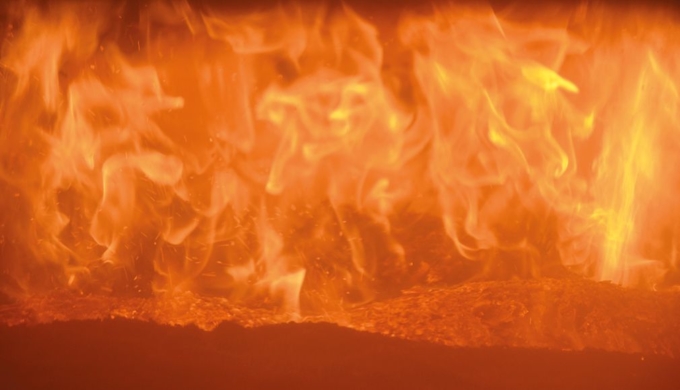Energy efficiency and environmental impacts must be taken into account when planning and operating a heat plant.
[arve url=”https://www.youtube.com/watch?v=lgk89p6BNIg”]
The animation shows the process of a bioenergy plant from the arrival of fuel via combustion to combustion gas cleansing. (Duration 1:38)
Energy efficiency
Fuel consumption is directly proportional to the plant’s efficiency. The better the efficiency, the lower the energy consumption.
Modern heating plant efficiency is at least 90%.
When wet bark is burned, complete combustion requires an air preheater (APH) regardless of the technology used.
The combustion air is heated using the final temperature of flue gases. An air preheater life cycle is usually 5–7 years so its replacement cost must be taken into consideration when assessing a plant’s operation and maintenance costs.
Using a flue gas scrubber is another way to improve the plant’s overall efficiency and lower fuel consumption considerably. For the flue gas scrubber to function in an optimal way, the temperature of heating circuit return water must be low.
The temperature of the water returning from the kiln is typically so high that flue gas scrubbers can rarely be used in sawmill heating plants.
Energy self-sufficiency in energy production
Some sawmills even have enough fuel for electricity production. It these sawmills, there is a steam boiler that produces pressurised steam in connection to a burner.
The steam travels from the boiler into a steam turbine that produces electrical energy by turning a generator.
Environmental impact
Different separator types are available for filtering solid impurities i.e. flue gas dust particles.
An electrostatic precipitator (ESP) is a commonly used flue gas filtering device that takes flue gases through an electric field. The dust particles are charged and made to move against the filter plates and are then removed from the flow of flue gas. The filtering power of an electrostatic precipitator is typically over 99%.
Bag filters and multicyclones and monocyclones (filtering power around 90%) can also be used depending on the plant’s power and the fuel used. Bag filters tackle the tiniest particulate emissions. The filtration ability of bag filters is over 99.5%.
The above filtering methods collect particles when they are dry. However, plants can also be equipped with flue gas scrubbers. In this method, after the pre-separator, the flue gases move onto a scrubber that washes away the remaining particles and condenses a considerable amount of the flue gases’ residual heat to be used, for example, for drying sawdust.
The functionality of the chosen combustion and boiler technologies and correct sizing criteria are the key to managing and reducing NOx emissions. In addition to these, NOx emissions can also be reduced by a solution where chemicals (urea and ammonia) are injected into the flue gases. This method is called selective non-catalytic reduction (SNCR).
SO2 emissions are not a problem for sawmills because the sawing process by-products do not contain significant quantities of sulphur that can turn into sulphur dioxide
Air emissions generated by plants are governed by the Finnish Government Decree on the environmental protection requirements of energy production units with a rated thermal input below 50 megawatts (750/2013).
The underlying principle in the legislation concerning all kinds of emissions is that the best possible technology that is applicable to the site should be used.

© KPA Unicon
Future prospects for sawmill heat production
Heat energy production is rarely the core business for sawmills but, in practice, it always has a significant role in making the sawmill profitable.
Reliable and energy-efficient heat production ensures an uninterrupted timber drying process and makes it possible for the sawmill to sell its best by-products to outside buyers.
For some sawmills, heat production into the local district heating grid has become part of their business operations.
When thinking about ways to improve heat production, one alternative is to consider outsourcing some of the operation tasks so that an independent partner is responsible for the operation, maintenance and optimisation of the plant. This would allow the sawmill staff to focus on improving their core business i.e. sawing, drying and further processing.
Constantly increasing demands for fewer emissions and better efficiency create their own challenges to the technical solutions used in heating plants.

© KPA Unicon

